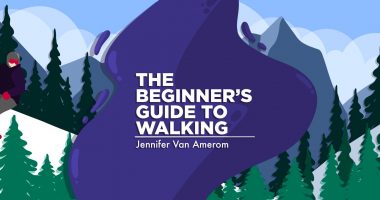What the outside world might not understand about life with NMOSD
A columnist explains what it's like to carry out everyday activities with the disorder

I love the fall. It’s the perfect balance of weather between the summer’s heat and the winter’s snow. I love wearing layers of clothing, and when the leaves on the trees change their colors it means we’re closer to my favorite holiday, Thanksgiving.
I also love the fall because there are so many things to do around Toronto, where I live. Last weekend, my family visited an apple farm outside the city. The contrast between urban skyscrapers and fresh country air, only an hour’s drive away, is one of the reasons I love living here.
At the farm, we did a lot of walking while picking our own apples, and the bags we carried grew heavier by the minute. I’m grateful that I can still pick apples despite having neuromyelitis optica spectrum disorder (NMOSD). Nevertheless, a tiny voice in my head wonders how long I’ll be able to do so.
To the outside world, I’m perceived as having a capable life. My social media posts portray me as part of the able-bodied world, but frankly, these posts can seem a bit disingenuous. It’s almost as if I were hiding parts of my identity and the struggles I face.
What others don’t see
After a day of apple picking, I was exhausted when we returned home. My legs felt heavy, and fatigue kicked in so fast that I briefly dozed off on the landing of the stairs when I sat down to take off my sneakers.
What I should post on social media, along with the happy photos, are ones that show me drained and tired, and ordering takeout yet again while my husband is away or busy with work. I see other patients posting images of receiving Rituxan (rituximab) treatment or lying in bed recovering and I’m envious of their bravery.
On the other hand, I can still do many activities as an NMOSD patient. I can go rock climbing at the local gym, for example, or hike the forest trails near our home. But afterward, I can’t do other tasks at home, such as washing a load of laundry, tidying up around the house, or grocery shopping because I’m too tired.
But no one will know all of this about me unless I decide to share it.
On the internet, people believe that you are who you say you are, and it’s easy for people to judge others. Unfortunately, some of this judgment has trickled into the real world. To counter this, we need more dialogue acknowledging that we disabled members of society can do many of the same things that able-bodied people can do, but there are challenges behind the scenes that often aren’t shared.
Note: Neuromyelitis News is strictly a news and information website about the disease. It does not provide medical advice, diagnosis, or treatment. This content is not intended to be a substitute for professional medical advice, diagnosis, or treatment. Always seek the advice of your physician or other qualified health providers with any questions you may have regarding a medical condition. Never disregard professional medical advice or delay in seeking it because of something you have read on this website. The opinions expressed in this column are not those of Neuromyelitis News or its parent company, Bionews, and are intended to spark discussion about issues pertaining to neuromyelitis optica spectrum disorder (NMOSD).







Comments